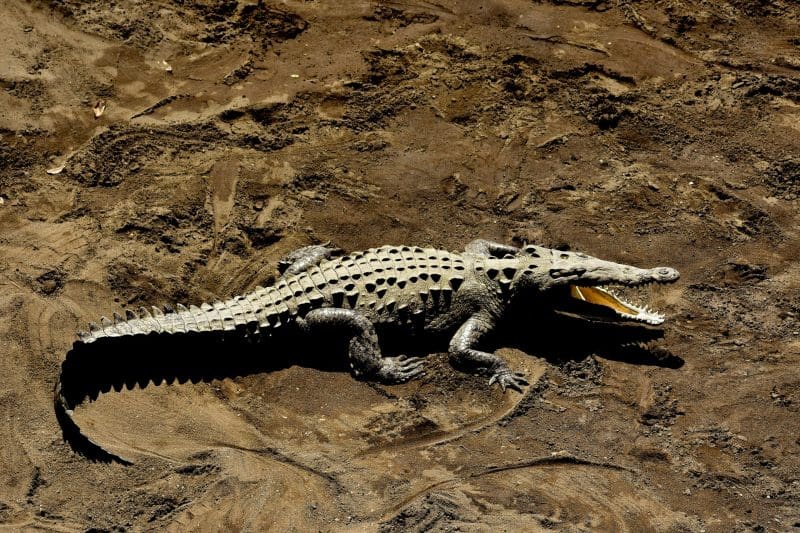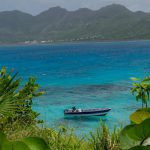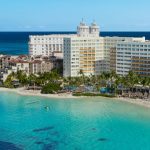Plans call for crocs to be returned to their original turf
Cuba’s Zoocriadero de Cocodrilos serves as a maternity ward of sorts for some of the island’s apex predators. The Ciego de Avila facility is raising American crocodiles, with its long-term goal being reintroducing the large reptiles into areas of northern Cuba that were home to the creatures prior to European settlement.
The farm, which welcomes tourists, now has some1,060 crocodiles of differing ages, but believes they truly belong in the wild, fending for themselves, which isn’t the case in their current home, where they are fed regularly but can’t roam far. The Crocodile Farm is one of several Cuban sites that are now breeding crocodiles for eventual release.
Loreine Amado Salazar of Cuban tour company Ecotur says releasing crocodiles raised in captivity will never be quick, with a lengthy adaption process meaning that 2 generations must be kept in captivity before a third can be safely released into the wild.
“We will never be able to do what nature does but we can help,” Amado Salazar says of efforts to reintroduce crocodiles into their native habitat.
American crocodiles, found in many parts of the Americas, reached Cuba long ago by island-hopping.
Parts of Cuba continue to have free-roaming crocodiles but they’re threatened by global warming, which is reducing the number of crocodile eggs that hatch, Amado Salazar reports.
The International Union for Conservation lists American crocodile populations as “vulnerable,” citing a variety of threats throughout their range that includes parts of each of the United States, the Caribbean, Central America and South America,. It cities such factors as hunting and habitat loss as contributing to their uncertain future.
Newly laid crocodile eggs at the Zoocriadero de Cocodrilos are gathered and then placed in incubators for approximately 90 days. Above 75% will likely hatch, which bodes well for reptiles that in the wild usually will only see 10% survive their first year.
Those hatchlings are then placed in special tanks for a period, where they can be viewed by curious tourists, who can also stroll along walkways that lead past large ponds home to crocodiles of differing ages and sizes. The often motionless reptiles sometimes casually sprawl on top of one another.
GECC (Grupo de Especialistas en Crocodriols de Cuba), a scientific team whose goal is to increase the population of the American Crocodile species in an effort to ‘make up what humans destroyed’ and try to restore the natural balance of the ecosystem by eventually releasing the crocodiles back into nature.
Canadian Steve Gillick visited the Zoocriadero de Cocodrilos in May and praised its “knowledgeable guides” who were happy to answer questions from visitors.
“A few crocodiles could be fed by visitors, standing on a porch and using a long fishing pole apparatus,” Gillick continues. “Other crocodiles could be seen submerged in the pond and glaring at the visitors. One of the guides held a small, cat-sized crocodile, clamping its jaws with her hand, as she spoke about the hard scales on the back, the soft skin on the belly, and allowed visitors to touch the reptile.
“I found the experience to be genuine,” said Toronto travel personality Gillick, who visited it during Cuban tourism show FITCuba. “I was afraid that this was going to be a zoo atmosphere. It was not. It was more of a knowledge-based, educational interaction with nature. I considered Captain Hook from the novel Peter Pan, where the pirate seeks revenge against Peter for having his left hand fed to a crocodile. But putting that fear aside, I found this to be a positive experience that reinforced the overall Cuban attitude — and objective — toward preserving nature and sustainability.”
Each crocodile is marked, enabling Crocodile Farm staff to monitor the likes of its age and health.
The crocs are fed about once a week, a schedule that reflects their slow digestion of food.
Southern Cuba’s Zapata Swamp is home to Cuban crocodiles, which are more aggressive than their American crocodile cousins, but shorter, reaching up to 3.5 meters in length, whereas American crocodiles can be 4.5 meters long.

Cuban crocs can live to 80.
Amado Salazar says it’s hard to spot wild crocodiles, which seek out watery environments.
He wouldn’t swim in a lake or river known to have the predators, stating crocodiles shouldn’t be feared but should be respected.
There was a time when Cubans would sometimes kill wild crocodiles but that’s no longer the case, he adds.
Amado Salazar says there hasn’t been any uproar over the Crocodile Farm’s plans to reintroduce the large predators — which have infrequently attacked people in Mexico and Central America — into the wild.
“I don’t think anybody is against them because we love nature,” says Amado Salazar says of Cubans, noting the project gets Cuban government support.
Indeed, he adds, the cold-blooded predators actually serve a useful role, helping preserve balance in nature by preventing some of their natural prey from overpopulating. “We should appreciate crocodiles.”
Crocodile Farm visitors can buy souvenirs, including crocodile keychains.
Amado Salazar says staff at the Zoocriadero de Cocodrilos have been working with crocodiles for some 30 years, and have clearly taken an interest in ensuring that they will continue to be part of the Cuban landscape.
“It’s like family for them,” he says of staff and their long-snouted neighbours.

















